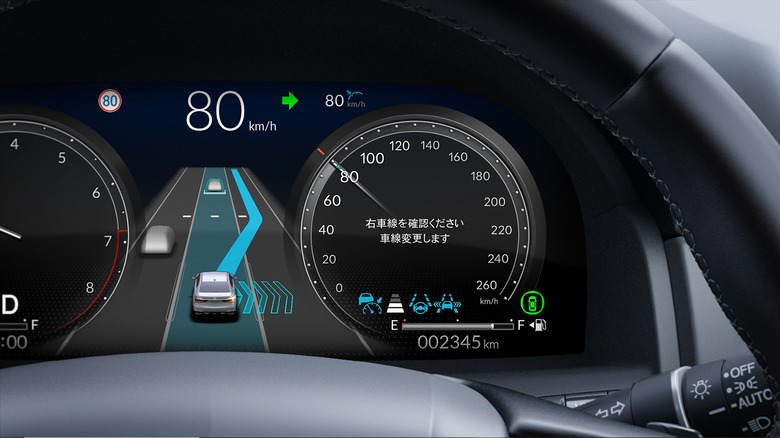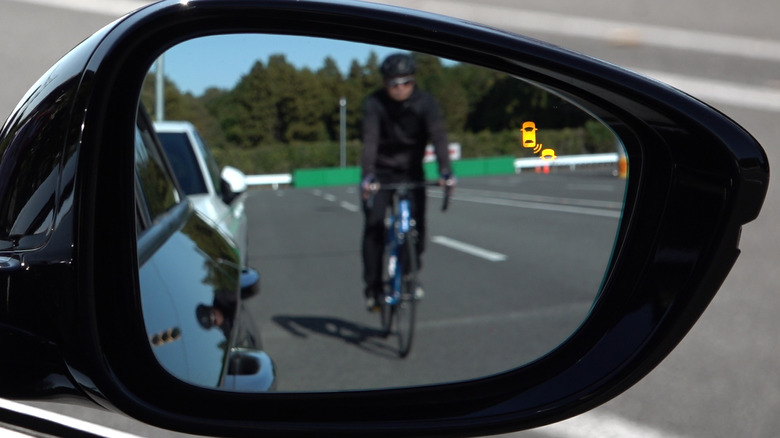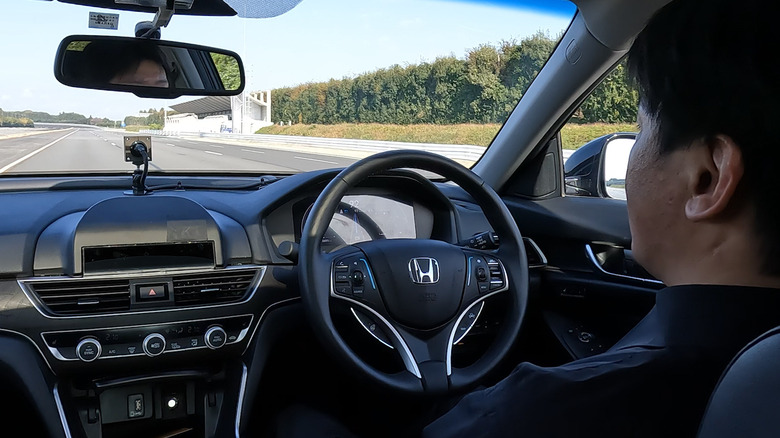Honda Announces Big Expansion For Sensing Driver Assistance System
Honda has revealed details about its next generation of safety and driver assistance equipment. Honda Sensing 360 will begin appearing on more cars in the U.S. in the coming years, and its flagship safety and Sensing Elite will debut its update in the mid-2020s. While some manufacturers have very ambitious environmental targets, Honda seems to be aiming very high with road safety — and Sensing technologies are a huge part of that. The company wants to half the number of fatalities Honda motorcycles and cars are involved in by the end of the decade, and eliminate them completely by the year 2050. Acura vehicles will have the exact same tech attached to their vehicles, but they will carry the AcuraWatch™ name instead of Honda's Sensing branding.
The company's Sensing tech first appeared on select vehicles in China, and now Honda feels like it's ready for a wider rollout. Currently, over seven million cars in the United States have been enhanced with Honda Sensing and AcuraWatch™ safety and driver assistance programs, and that number is set to increase massively. A very early version of the AI appeared on American Honda vehicles as far back as 2014 with the launch of the 2015 Honda CR-V. Acuras also got their version when the 2015 Acura TLX hit the road. Things have come a very long way since then and will get even more advanced in the near future. While self-driving cars still face a whole litany of legal and technological hurdles, the more advanced Sensing package will include some limited Level 3 self-driving capabilities. If things go as planned, you won't have to buy a top-of-the-line Honda to experience its Sensing technology. The manufacturer aims to equip every model it makes with Sensing 360 by at least 2030.
What are the plans for Sensing 360?
Sensing 360, a more advanced version of Honda's driver assistance tech than the basic "Sensing" package, is already around — so some Honda drivers will have experienced the current version of it. That version is going to get a lot better and will be attached to even more vehicles as time goes on. It functions as an "omnidirectional safety and driver-assistive system" running off sensors that have been placed around the car. When one of those sensors detects danger, the car intervenes, either by warning the driver or slamming on the brakes. The tech aims to eliminate collisions caused by health-related situations such as a heart attack or stroke that render a driver immobile, or more commonly, by human error.
The first generations of Honda Sensing 360 were tested out in the Chinese market, and the newer, more advanced version is no exception. It will begin appearing on vehicles there in 2024 and roll out in the U.S. shortly afterward. The 2024 update will focus on how Sensing 360 picks up dangers occurring outside of the vehicle, as well as things affecting the person driving the car. The biggest news regarding a future update is a "motorcycle detection function" which will help protect what are arguably the most vulnerable road users. That function should be ready by 2030. Many of the features planned for Sensing trickle down from the company's Level 3 driving technology which already appears in some form on models with its flagship driver assistance AI — Sensing Elite. While Sensing 360 is currently the company's mid-range driver assistance package, it will eventually become the standard. Currently, Honda's short-term plan seems to involve rolling out basic Sensing in developing markets, while standardizing Sensing 360 in places like Japan, China, and the United States.
There is also a flagship version with self-driving tech
Honda's Sensing Elite goes all out. The users who have access to it already have Level 3 self-driving technology at their fingertips. Level 3 self-driving tech is far beyond anything else on the road. It is "conditionally automated," meaning the car can take control in certain situations without the need for any driver input. In Honda Sensing Elite's case, this includes the "Traffic Jam Pilot function" which allows drivers to take a break and let their car do the work when they're stuck in traffic.
Beyond the self-driving features, Sensing Elite is basically a more advanced version of Sensing 360. It is more equipped to recognize "complex scenes" and can better assist drivers in situations that occur in more difficult environments — such as incidents that happen when you're not driving on a highway. Elite's features tend to trickle down to the other packages, so it's possible things like motorcycle detection could appear on this package first.
While the exact plans Honda has for its Elite driver assistance package haven't been revealed yet, the company says it will "accelerate the advancement and popularization of Honda Sensing Elite" over the coming years. It has also heavily hinted at the direction the Elite package will be headed in. The self-driving tech is likely to expand, with features to assist at road junctions and the ability to park in and drive you out of your home garage. Sensing Elite is also expected to receive an update around the middle of this decade, and more features will undoubtedly be unveiled and confirmed before then.


